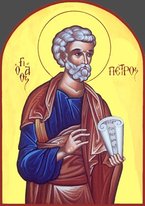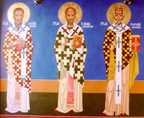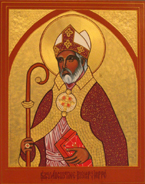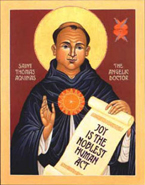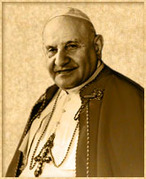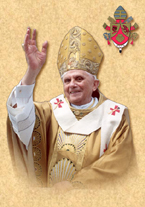It is totally absurd to try to make the liturgy “attractive” by introducing dancing pantomimes (wherever possible performed by professional dance troupes), which frequently (and rightly, from the professionals’ point of view) end with applause. Wherever applause breaks out in the liturgy because of some human achievement, it is a sure sign that the essence of liturgy has totally disappeared and been replaced by a kind of religious entertainment. Such attractiveness fades quickly - it cannot compete in the market of leisure pursuits, incorporating as it increasingly does various forms of religious titillation. I myself have experienced the replacing of the penitential rite by a dance performance, which, needless to say, received a round of applause. Could there be anything farther removed from true penitence? Liturgy can only attract people when it looks, not at itself, but at God, when it allows him to enter and act. Then something truly unique happens, beyond competition, and people have a sense that more has taken place than a recreational activity. None of the Christian rites includes dancing. Commentary: Indeed, secularism and consumerism have intruded into ecclesial life like never before, and many - clergy and laity alike - remain unsuspecting and oblivious (and, often, obstinate) about this reality. Of all liturgical eras of the Church, there has been perhaps no one comparable era as this, in which the quality of liturgy is gauged in accordance with how it satisfies the worshipers. The numerical mass of people who speak of the liturgy in terms of how it serves their liturgical fancies, and whether or not it is subservient to their personal preferences, is alarming. As with all other fields of study, liturgy too evokes a certain sense of subjectivism through which many individuals somehow reserve a right (I would prefer to call it a "wrong") of private judgement. If this attitude sounds somewhat Protestant, it is. And in my observation, the issue of liturgical dance often rests at this point, and doubtlessly, many are happy for it to linger within the margins of debatability. But in the final analysis, it is very much an issue of obedience. Given that the present Holy Father has never spoken in great breadth about liturgical dance since the commencement of his pontificate (even the book I am expounding was written prior to his pontificate, although I sincerely doubt much of his mind has changed in regard to his liturgical senses), some do contend that liturgical dance has never then been expressly forbidden. The Prefect Emeritus of the Congregation for Divine Worship and the Discipline of the Sacraments, Francis Cardinal Arinze, had however spoken the mind of the Sacred Magisterium on these matters in stating that liturgical dance was never permitted. He had proceeded to explain, what were refined movements and rhythmically ordered processions in certain cultures were not, as such, considered "dance" and were therefore permitted. The Magisterium has spoken. All that is left now is a matter of obedience. Or otherwise. The Church, in all places and at all times, commands obedience and assent to her teachings. Even in issues that are not entirely pronounced in such an explicit way as they are on other matters, the children of the Church are expected to accord their assent of intellect and will in such matters. As is stated in Lumen Gentium 25a: This religious submission of mind and will must be shown in a special way to the authentic magisterium of the Roman Pontiff, even when he is not speaking ex cathedra; that is, it must be shown in such a way that his supreme magisterium is acknowledged with reverence, the judgments made by him are sincerely adhered to, according to his manifest mind and will. His mind and will in the matter may be known either from the character of the documents, from his frequent repetition of the same doctrine, or from his manner of speaking. Evidently, obeying the rubrics of the liturgy is more than a mere matter of whether the rubrics make sense. It is also, equally, a reflection of the state of one's heart and the state of one's communion with Holy Mother Church.
0 Comments
Leave a Reply. |
Categories
All
Archives
December 2021
|
|
FOLLOW DEACON SHERMAN DEACON'S FORMATION FB GROUP
© 2021 Sherman Kuek. All rights reserved.
|

 RSS Feed
RSS Feed
